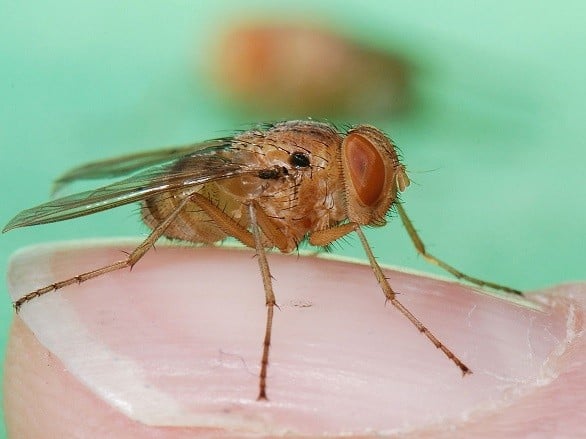
 Ormia ochracea. His name doesn’t roll off the tongue, but one day he may help you if you are hard of hearing.
Ormia ochracea. His name doesn’t roll off the tongue, but one day he may help you if you are hard of hearing.
Our auditory senses are amazing. Creatures of all sorts, including us, are incredibly skilled at taking in the wide range of sound waves emanating from all around, picking out the important noises and locating where they’re coming from — the shout of one’s child at a park, for instance, or which way that ice cream truck is going.
Now, a new Canadian study thinks studying a tiny insect could lead to better hearing for humans.
For us, directional hearing depends on the split second difference between a sound wave’s reaching one ear before the other, giving our brains enough information to locate the sound source. But not all directional hearing works like ours.
The space between the eardrums of the Ormia ochracea is just one millimetre
For the tiny Ormia ochracea, a nocturnal parasitic fly from the southern United States and Mexico, the space between one eardrum and the other is just one millimetre, hence it has developed another approach —its two eardrums are connected by a rigid joint that works like a teeter-totter. Sound waves that hit one eardrum cause a vibration on the other one, effectively amplifying the distance between the two and allowing for directional perception. The mechanism works so well, in fact, that scientists call the Ormia an example of “hyperacute” directional hearing.
“It’s interesting that something so small can be sensitive to the direction of sound,” says Andrew C. Mason of the Department of Biological Sciences at the University of Toronto, Scarborough, in a press release. “They’re tiny relative to the wavelength of sound they’re able to localize so they shouldn’t be able to do what they do. But, they can because of the mechanical coupling.”
Mason, along with colleague Norman Lee, also from U of T Scarborough’s Department of Biological Sciences, have been studying the small, yellowish fly science refers to as Ormia ochracea, to shed light on a mechanical conundrum for auditory systems such as sensors, microphones and hearing aids. Called the “cocktail party problem,” for humans it describes the difficulty in hearing and understanding one person’s voice and speech in a roomful of noise.
The segregation of sounds to pick out the desired ones (in our case, the person holding the drink in front of us, for Ormia ochracea, the chirp of a cricket in the dead of night) is a challenge since sound waves from different sources can combine to form one waveform before hitting out ears, making the task of isolating a particular cue all the more difficult.
In a new study published in the journal eLife, Mason and Lee investigated Ormia’s ability to pick out its favourite sound (the cricket, upon which it lays its eggs) at the same time it’s being hit with other distracting noises. The researchers devised a spherical treadmill the size of a table tennis ball which could read the movements of a pinned fly on top of it in response to a sound source. For Ormia, they found that when a cricket song was played, the fly would attempt to walk toward the sound but when a masking noise was also played from the opposite direction, the fly’s pace toward the cricket sound wasn’t as swift, indicating that the Ormia’s see-saw eardrums, while allowing for exceptional directional hearing, cause it more difficulties when it comes to distracting noises.
“These flies are very accurate for one thing, which is detecting cricket sounds, but that comes at a cost since they’ve evolved to focus on this very restrictive set of information,” Mason says.
Leave a Reply
You must be logged in to post a comment.




 Share
Share Tweet
Tweet Share
Share




Comment